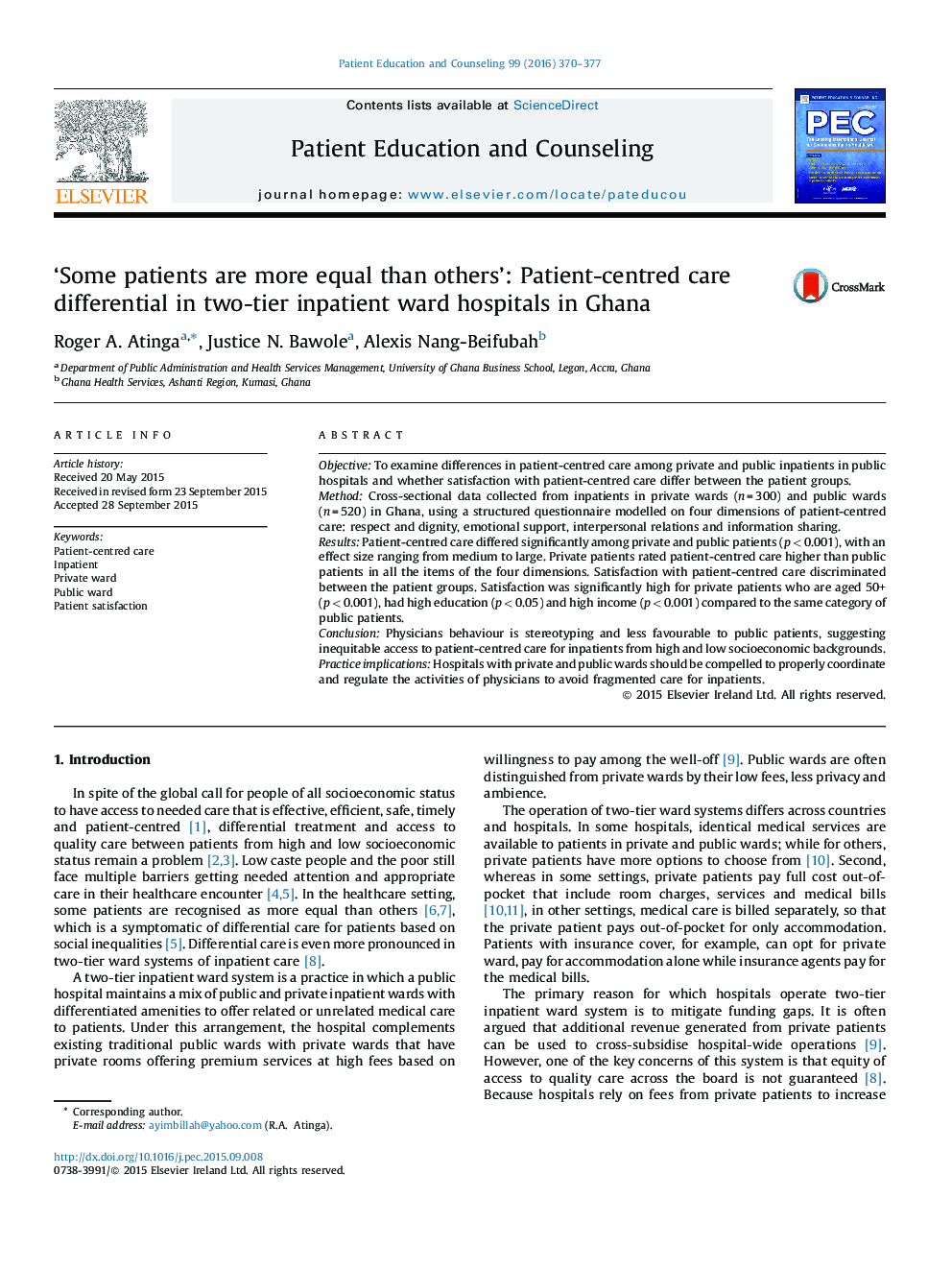| Article ID | Journal | Published Year | Pages | File Type |
|---|---|---|---|---|
| 3814636 | Patient Education and Counseling | 2016 | 8 Pages |
•We assessed patient-centred care in hospitals with two-tier inpatient wards.•We examined patient-centred care differences across private and public wards.•Patient-centred care discriminated between private and public wards.•Private patients rated patient-centred care higher than public patients.•Private patients showed increased satisfaction with patient-centred care.
ObjectiveTo examine differences in patient-centred care among private and public inpatients in public hospitals and whether satisfaction with patient-centred care differ between the patient groups.MethodCross-sectional data collected from inpatients in private wards (n = 300) and public wards (n = 520) in Ghana, using a structured questionnaire modelled on four dimensions of patient-centred care: respect and dignity, emotional support, interpersonal relations and information sharing.ResultsPatient-centred care differed significantly among private and public patients (p < 0.001), with an effect size ranging from medium to large. Private patients rated patient-centred care higher than public patients in all the items of the four dimensions. Satisfaction with patient-centred care discriminated between the patient groups. Satisfaction was significantly high for private patients who are aged 50+ (p < 0.001), had high education (p < 0.05) and high income (p < 0.001) compared to the same category of public patients.ConclusionPhysicians behaviour is stereotyping and less favourable to public patients, suggesting inequitable access to patient-centred care for inpatients from high and low socioeconomic backgrounds.Practice implicationsHospitals with private and public wards should be compelled to properly coordinate and regulate the activities of physicians to avoid fragmented care for inpatients.
